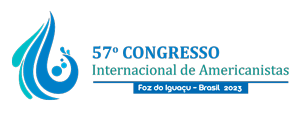| Dados do autor | |
|---|---|
| Nome | Juan Villanueva |
| E-mail do autor | Email escondido; Javascript é necessário. |
| Sua instituição | Carrera de Arqueología, Universidad Mayor de San Andrés UMSA |
| Sua titulação | Post-Doctor |
| País de origem do autor | Bolivia |
| Dados co-autor(es) [Máximo de 2 co-autores] | |
| Proposta de Paper | |
| Área Temática | 01. Antropologia |
| Grupo Temático | Beyond writing and iconography: coding |
| Título | Re-thinkhing Tiwanaku images: coloured beings, atmospheres and co-creation |
| Resumo | The rich and diverse images of Middle Horizon (ca. A.D. 5000 – 1100) Tiwanaku in the South-central Andes, have been traditionally seen as chronologic markers, ethnicity emblems, icons for human and animal beings, and symbols of abstract ideas regarding nature and power. However, ethnographic and ethno-historical sources about Andean thought, suggest that images and colored materials are more than distant “representations” of external natures or realities. They enable relational dialogues between human and non-human beings, in order to “co-create” the world –using an influential concept by Arturo Escobar. This paper revisits Tiwanaku iconography, and especially those images painted in pottery for ceremonial feasting and offering. We propose an alternative reading, where imagined beings allow for a communication with the spirits of mountains, earth and soil, in order to influence the weather. We suggest images and colors were intended to achieve the atmospheres of day, night and sunset; of rain, warmth and frost. They did so as integral components of the design of ceramic recipients, used for sharing food and beverage between human and non-human entities. Thus, humans and eagles, felines and deer, snakes and llamas, and even the amorphous beings of the subsoil, were more than meaning, as they emerged and unfolded through sensorial engagements with the environment –a “dwelling poetics”, in Tim Ingold’s words. Today, for many aymara communities where archaeological findings of Tiwanaku pottery took place, those colors and images are closer to the relational co-creation of environments than to the static representation of the past posited by the politics of cultural heritage. Thus, to re-think the role of images implies, not only to suggest alternative interpretations of a distant past, but to reconsider the role of archaeological things and archaeologists in the construction of local communities’ pasts and presents. |
| Palavras-chave | |
| Palavras-chave |
|
